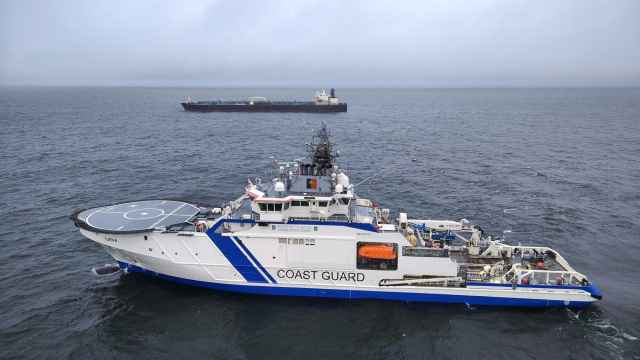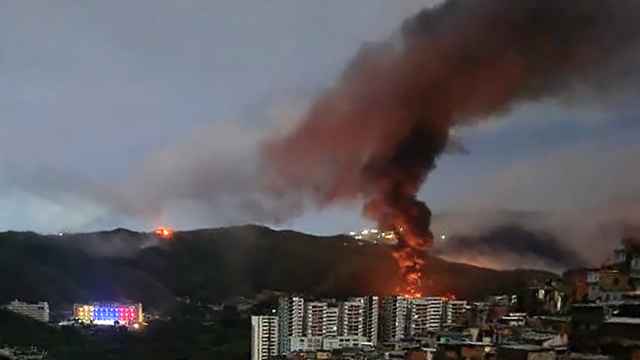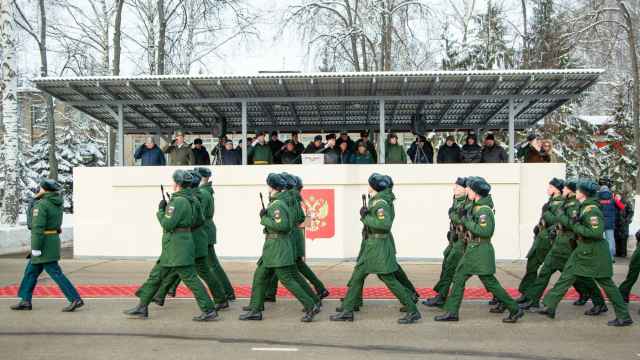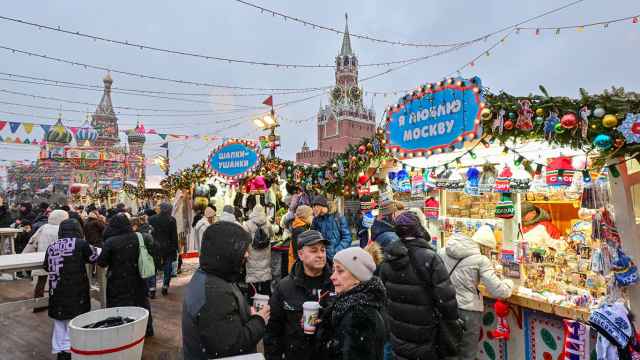Darrell Stevenson eats a minimum of eight pounds of beef per week at his family's cattle ranch in Montana. Feeding that appetite in Russia, which he compares to America's old West, can be tough.
"The only steaks I've had in Russia have actually been imported," said Stevenson, who is transplanting a 1,400-head ranch, complete with horses and cowboys, to the Voronezh region in southern Russia. Local cuts, he said, are "maybe a step above shoe-leather."
Stevenson, 41, created a joint venture, Stevenson-Sputnik LLC, with two Russian partners last year. The group invested $18 million to build the ranch and import cattle, said co-owner Sergei Goncharov. The company received a subsidized loan from Sberbank, Russia's largest lender, and the state is reimbursing 30 percent of investment costs, he said.
The ranch seeks to capture a slice of Russia's live cattle market. Russia imports 40,000 to 50,000 head annually, worth about $150 million, the U.S. Department of Agriculture estimates. While Russian beef consumption rose 2.6 percent to 2.23 million tons last year, government statistics show domestic production fell 0.6 percent to 199,000 tons.
"Since 2005, we've had a herd of cattle, but we needed to buy good genetics," Goncharov said. "The best genetics for livestock are in America. Everybody knows that."
'High Aspirations'
Goncharov and partner Alexander Buzuleyev started buying embryos and semen from Stevenson's ranch in 2007 to improve their herd. Stevenson went into business with the Russians after his father turned the family business over to him.
"What they needed was assistance and management," Stevenson said. "They've got high aspirations and big goals and want the most modern technology, but sometimes they've got to step back and learn how to build a brace post to begin with."
Russian government policies have helped. President Dmitry Medvedev signed a Food Security Doctrine in February 2010 that seeks to have Russia produce 85 percent of its meat domestically by 2020 to reduce price fluctuations and dependence on imports.
While Russia is the world's second-largest beef importer by volume, trailing only the United States, the market has shrunk since the collapse of the Soviet Union. Per capita consumption dropped to 15.7 kilograms last year, about half the level in 1990, according to the U.S. Department of Agriculture.
'Potential for Growth'
The U.S. beef cattle herd was 92.6 million as of Jan. 1, the USDA said last month. Russia's is about 600,000, according to the Agriculture Ministry. That's about one animal for every 237 people in Russia, compared with a ratio of less than 1 to 4 in the United States.
"There is tremendous potential for growth in beef consumption in Russia," Erin Daley Borror, an economist at the Denver-based U.S. Meat Export Federation, said in an e-mail.
Russian beef comes mainly from dairy cattle, she said. The USDA estimated Russia's 2010 production at 1.3 million tons, down from 4.3 million tons in 1990, with imported beef accounting for more than 40 percent of consumption, she said.
Getting Russians to eat more whole cuts of meat, which account for less than 1 percent of beef consumption, will require more than just an influx of steakhouses in Russia's more affluent cities, Sergei Yushin, head of the National Meat Association's executive committee, said by phone from Moscow.
Russian consumers "are badly informed about beef, about what you can do with it, and how you should cook it and eat it," Yushin said.
Demand for marbled beef, higher quality meat that gets its name from the veins of fat running through it, is growing but accounts for less than 1 percent of the Russian market, he said.
For traditional Russian dishes, "you can use regular cows, it's all just stewed or boiled."
Mass Market
Stevenson says the ranch is targeting the mass market, not just high-end sales.
"Our primary purpose is to produce and help populate a herd that can feed the masses," he said. "This is no doubt an emerging marketplace. There is more expendable income and with that in any country there is always an urge for more consumption of protein."
Real disposable income in Russia has grown by an average of 9.1 percent annually since 2000.
Production costs for live cattle at the Voronezh operation will be as much as 30 percent less than in Montana, and the return may be 300 percent to 500 percent higher, Stevenson said at the ranch, about 550 kilometers south of Moscow.
"Our operating profit, the difference between the price we sell the cattle for and our costs, is more than 100 percent," Goncharov said. "I know it might not be a good idea to talk about that."
An imported heifer from Australia costs about $3,500 in Russia, while bulls go for about twice that, Goncharov said.
"The market right now is formed by imported cattle from America and Australia, and those cattle cost lots of money here," he said. "We'll sell at the same prices but better cattle."
A Message from The Moscow Times:
Dear readers,
We are facing unprecedented challenges. Russia's Prosecutor General's Office has designated The Moscow Times as an "undesirable" organization, criminalizing our work and putting our staff at risk of prosecution. This follows our earlier unjust labeling as a "foreign agent."
These actions are direct attempts to silence independent journalism in Russia. The authorities claim our work "discredits the decisions of the Russian leadership." We see things differently: we strive to provide accurate, unbiased reporting on Russia.
We, the journalists of The Moscow Times, refuse to be silenced. But to continue our work, we need your help.
Your support, no matter how small, makes a world of difference. If you can, please support us monthly starting from just $2. It's quick to set up, and every contribution makes a significant impact.
By supporting The Moscow Times, you're defending open, independent journalism in the face of repression. Thank you for standing with us.
Remind me later.





